Compact and competent guide for beginners and advanced coffee makers
Antonio Ardente - gastro and coffee expert by birth from Naples and at home in Hamburg for 30 years - reveals his tricks and tips
The perfect coffee takes time and experience, that much is clear. But what to do if the espresso tastes too sour or the cappuccino too watery.
Toni shows you what you should pay attention to during preparation and which problem can have which cause.
Toni's tips
THE BEAN:
First, of course, we should turn our attention to our most important ingredient, the coffee beans. There are three arch enemies of the perfect bean and therefore of a perfect coffee:
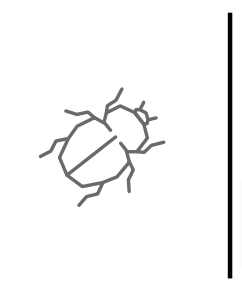 Pest infestation
Pest infestation
The problem: coffee tastes rancid and bitter. Pest infestation doesn't have to mean that you'll find bugs in the bag right away. Rather, infestation can occur during the cultivation of the coffee. Small animals then eat their way unnoticed into the coffee cherries. Bitter substances are then formed during cultivation and too much heat gets into the interior of the bean during roasting.
The solution: High-quality coffees are usually closely inspected by the roaster. This ensures that impaired beans remain single-precipitate at best. If you notice a pest infestation several times with the same roaster, you should consider changing roasters.
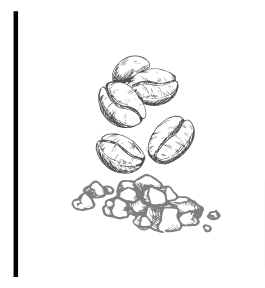 Broken beans
Broken beans
The problem: The coffee lacks aroma and flavor and the beans look dry, with a lot of breakage collecting in the bag. Broken beans are a real flavor killer. They indicate insufficient moisture in the bean and poor quality during harvesting, transport and processing.
The solution: use high-quality coffee. Pay attention to the packaging. Some reputable roasters intentionally and skillfully extract more moisture from their coffee beans to create unique flavors. Such coffees are then usually packaged in a very compressed manner to prevent breakage.
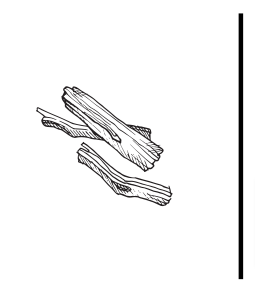 Foreign bodies
Foreign bodies
The problem: You find foreign bodies such as small stones or pieces of wood in your coffee beans. This indicates clear deficiencies in the choice of green coffee and processing. Here it is no wonder if the coffee does not taste good.
The solution: sounds harsh, but it is... change roasters. Foreign bodies are a no-go and indicate poor quality.
Over-roasting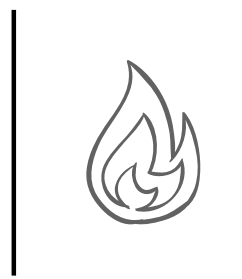 The problem: The coffee beans give off a rancid, acrid and/or sour smell. This may indicate over-roasting. In this case, the heat penetrates too deeply and for too long into the interior of the bean during roasting, forming fine cracks. As a result, more oxygen gets inside and the bean oxidizes. Unpleasant tastes and loss of aroma are not far away.
The problem: The coffee beans give off a rancid, acrid and/or sour smell. This may indicate over-roasting. In this case, the heat penetrates too deeply and for too long into the interior of the bean during roasting, forming fine cracks. As a result, more oxygen gets inside and the bean oxidizes. Unpleasant tastes and loss of aroma are not far away.
The solution: the odor test. It can tell a lot about the degree of roasting of a coffee. The smell should not be unpleasant and acrid at all. If the beans also crumble very easily between your fingers, you can be sure that they have been roasted too much. Then the only thing that will help is to replace the beans.
THE COFFEE GROUNDS:
Once you've found the right roasted coffee, it's right back to the grind. On the way of the coffee from the bean into the portafilter you have to consider the following:
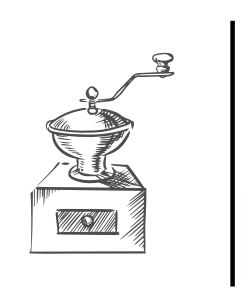 The grind
The grind
The problem: If the coffee is ground too coarsely, the water flows through it too quickly during extraction and the ground coffee offers too little surface area to release its aroma. The coffee then becomes watery-bitter and a crema appears only sporadically. If, on the other hand, it is ground too finely, too much pressure is created in the portafilter. As a result, unwanted oils are released from the coffee and end up in the cup. This distorts the taste.
The solution: The proof of the pudding is in the eating. You should feel your way to the right grind. This is individual for each coffee. The coffee is optimally ground when it starts to form small lumps.
The quantity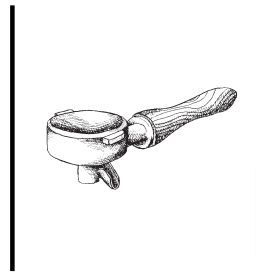 The problem: If there is too little coffee in the portafilter, only a small amount of aroma can be released during extraction. In addition, the water swirls around in the portafilter itself and partially dissolves the coffee puck. The extraction thus becomes watery and tasteless. If too much coffee grounds are used, on the one hand the portafilter can loosen due to the high pressure, on the other hand the pressure can also dissolve the unwanted oils from the coffee here.
The problem: If there is too little coffee in the portafilter, only a small amount of aroma can be released during extraction. In addition, the water swirls around in the portafilter itself and partially dissolves the coffee puck. The extraction thus becomes watery and tasteless. If too much coffee grounds are used, on the one hand the portafilter can loosen due to the high pressure, on the other hand the pressure can also dissolve the unwanted oils from the coffee here.
The solution: simple and efficient. Fill the portafilter so that the ground coffee hits the water outlet of the machine exactly. Most portafilters have markings or edges for this purpose.
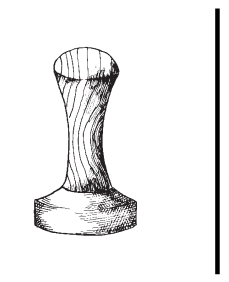 Tamping
Tamping
A common problem: If the coffee grounds are not compacted enough, the water runs through too quickly and the coffee becomes watery. Here, too, almost no crema is formed and the coffee becomes bitter. Tampering is a true art. If you master it, you have a miracle tool for perfect coffee.
The solution: The ground coffee should always be evenly distributed in the portafilter. A so-called leveler can help here. The more evenly the ground coffee is distributed, the more evenly the water runs through it. When tamping, make sure that sufficient pressure is applied and that it comes vertically from above.
THE EXTRACTION:
Now we are getting closer and closer to the perfect coffee. After the right extraction, we soon hold our much longed-for coffee in our hands. Here we have to pay attention to the following:
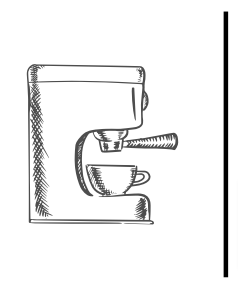 Preparation
Preparation
Common problem: The wrong cup and impurities in the machine. If you choose the wrong cup, e.g. a cappuccino cup for the espresso, the espresso cools down too quickly and loses aroma. A dirty machine should also be avoided. Lime deposits or dirt often cause bad taste.
The solution: find the right cups for your favorite drinks (Here). Clean your machine regularly. The water should always be clear and clean. So should water tanks and hoses. Dirty machines and equipment are THE number one cause of bad taste.
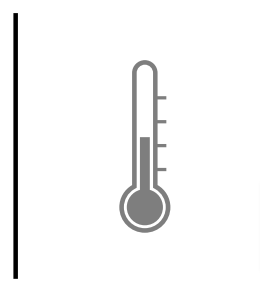 The temperature
The temperature
The problem: If the machine is set too hot, the coffee grounds can burn quickly and the taste becomes unpleasantly bitter. If the temperature is too low, not all the flavors are released and the coffee seems tepid.
The solution: "flushing" (running through without a portafilter) the brew group before extraction can ensure more even heat distribution (good side effect: coffee particles from the last extraction are flushed out as well).
Also, pay attention to the recommended brewing temperature found in the descriptions of many of our coffees and set your machine accordingly. For Arabica coffees, a brewing temperature above 90 degrees Celsius is recommended. Robusta beans, on the other hand, like slightly lower temperatures.
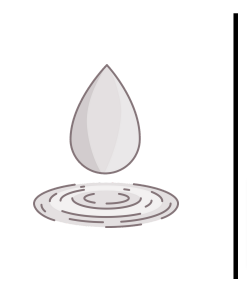 The water hardness
The water hardness
The problem: If the water is too soft, the coffee can quickly taste sour. If, on the other hand, the water is too hard, the coffee often lacks aroma and sweetness. It's hard to believe how much influence water hardness can have on taste.
The solution: test the hardness of your water. In our assortment you will find various water filters (Brita and BWT among others). These ensure an ideal water hardness, with which every coffee tastes good.
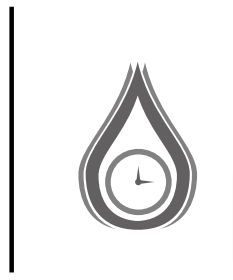 The water quantity
The water quantity
The problem: Too long extraction ensures more coffee in the cup, but can also distort the aroma. For example, the coffee can quickly become too watery and lose flavor. Too little extraction is really a matter of taste. The aroma of the coffee is not affected.
The solution: Time is everything! For a true Italian espresso, an extraction time of 25 (+/-5) seconds is recommended. Some of our coffees include the roaster's recommended extraction time in the description.
And there you have it - our perfect coffee. If you follow these tips, nothing will stand in the way of true coffee enjoyment and you will know exactly what to check if the coffee does taste bad.

